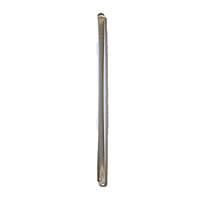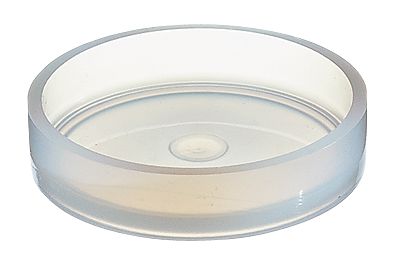Quadrilateral
----Let A,B,C and D be four points on the same plane, if no three of these points are collinear and the segments line segment AB, BC, CD and AD intersect only at their endpoints, then the union of these four segmenst is called a quadrilateral.
Theorem 6-14 PDCT
--> Each diagonal seperates a parallelogram into 2 congruent triangles.
Theorem 6-15 POSC
--> In a parallel, any 2 opposite sides are congruent.
Theorem 6-16 POAC
--> In a parellelogram, any 2 opposite angles are congruent.
Theorem 6-17 PCAS
--> In a parallelogram, any 2 consecutive angles are supplementary.
Theorem 6-18 PDB
--> The diagonals of a parallelogram bisect each other.
Theorem 6-19 DSCP
--> Given a quadrilateral in which both pairs of opposite sides are congruent, then the quadrilateral is a parallelorgram.
Theorem 6-20 SPDC
--> If 2 sides of a quadrilateral are parallel and congruent then the quadrilateral is a parallelogram
Theorem 6-21 DBP
--> If the diagonals of a quadrilateral bisect each other, then a quadrilateral is a parallelogram.
Theorem 6-22 The Middline Theorem
--> The segment between the midpoints of two sides of a triangle is parallel to the 3rd side and is half as long.
Thursday, July 26, 2007
theorem (triangles ang transversal)
Theorem 6-5 AIP (Alternate Interior Parallel)
--> Given 2 lines cut by a transversal. If a pair of alternate interior angles are congruent, then the lines are parallel.
Theorem 6-6
--> Given 2 lines cut by a transversal. If a pair of coresponding angles are congruent then a pair of corresponding angles are congruent, then a pair of alternate interior angles are congruent.
Theorem 6-7
--> Given 2 lines cut by a transversal. If a pair of corresponding angles are congruent then the lines are parallel.
Theorem 6-8
--> Given 2 lines cut by a transversal. Of a pair pf interior angles on the same side of the transversal are suplementary, the lines are parallel.
Theorem 6-9 The PAI Theorem
--> If 2 parallel lines are cut by a transversal, then the alternate interior angles are congruent.
Corollary 6-9.1 The PCA Corollary
--> If 2 parallel lines are cut by a transversal, then each pair of corresponding angles are congruent.
Corollary 6-9.2
--> If 2 parallel lines are cut by a transversal, the interior angles on the same side of the transversal are suplementary.
6-8 IASP / Consecutive Interior Angles suplementary
6-8.1 CESP/ COnsecutive Exterior Angles Suplementary
AEP/ Alternate Exterior Angles Parallel
Theorem 6-10
--> In a plane, if a line intersects one of two parallel lines in only one point, then it intersects the other.
Theorem 6-11
--> In a plane, if two lines are each parallel to a third line then they are parallel to each other.
Theorem 6-12
--> In a plane, if a line is perpendicular to one of two parallel lines it is perpendicular to one of two parallel lines it is perpendicular to the other.
Theorem 6-13
--> For every triangle, the sum of the measures of the interior angles is 180
6-13.1
--> Given a correspondence between two triangles if two pairs of corresponding angles are congruent, then the 3rd pair of corresponding angles are also congruent.
6-13.2
--> The acute angles of a right triangle are coplementary.
6-13.3
--> For any triangles, the measure of any exterior angles the sum of the two remote interior angles.
--> Given 2 lines cut by a transversal. If a pair of alternate interior angles are congruent, then the lines are parallel.
Theorem 6-6
--> Given 2 lines cut by a transversal. If a pair of coresponding angles are congruent then a pair of corresponding angles are congruent, then a pair of alternate interior angles are congruent.
Theorem 6-7
--> Given 2 lines cut by a transversal. If a pair of corresponding angles are congruent then the lines are parallel.
Theorem 6-8
--> Given 2 lines cut by a transversal. Of a pair pf interior angles on the same side of the transversal are suplementary, the lines are parallel.
Theorem 6-9 The PAI Theorem
--> If 2 parallel lines are cut by a transversal, then the alternate interior angles are congruent.
Corollary 6-9.1 The PCA Corollary
--> If 2 parallel lines are cut by a transversal, then each pair of corresponding angles are congruent.
Corollary 6-9.2
--> If 2 parallel lines are cut by a transversal, the interior angles on the same side of the transversal are suplementary.
6-8 IASP / Consecutive Interior Angles suplementary
6-8.1 CESP/ COnsecutive Exterior Angles Suplementary
AEP/ Alternate Exterior Angles Parallel
Theorem 6-10
--> In a plane, if a line intersects one of two parallel lines in only one point, then it intersects the other.
Theorem 6-11
--> In a plane, if two lines are each parallel to a third line then they are parallel to each other.
Theorem 6-12
--> In a plane, if a line is perpendicular to one of two parallel lines it is perpendicular to one of two parallel lines it is perpendicular to the other.
Theorem 6-13
--> For every triangle, the sum of the measures of the interior angles is 180
6-13.1
--> Given a correspondence between two triangles if two pairs of corresponding angles are congruent, then the 3rd pair of corresponding angles are also congruent.
6-13.2
--> The acute angles of a right triangle are coplementary.
6-13.3
--> For any triangles, the measure of any exterior angles the sum of the two remote interior angles.
theorems (lines and planes)
Theorem 6-1
--> Two parallel lines lie in exactly one plane
Theorem 6-2
--> In a plane, two lines are parallel if they are both perpendicular at the same line.
Theorem 6-3
--> Let L be a line and let P be a point NOT on L. There is at least one line through P parallel to L.
Theorem 6-4
--> If 2 lines are cut by a transversal and one pair of alternate interior angles are congruent, then the other pair of alternate angles are also congruent.
--> Two parallel lines lie in exactly one plane
Theorem 6-2
--> In a plane, two lines are parallel if they are both perpendicular at the same line.
Theorem 6-3
--> Let L be a line and let P be a point NOT on L. There is at least one line through P parallel to L.
Theorem 6-4
--> If 2 lines are cut by a transversal and one pair of alternate interior angles are congruent, then the other pair of alternate angles are also congruent.
Tuesday, June 12, 2007
science: lab equipment and functions

mortar and pestle: for grinding and mixing
weighing scale: to meassure mass
spring scale: meassures weight
funnel: to guide liquid or powder
stirring rod: stirring and transferring liquids
erlenmayer flask: for titration [knowing the pH]
graduated cylinder: meassuring volume
florence flask: for mixing and distilation
volumentric flask: for storage, meassure volume, container and dilution
beaker: for heating
wire gauz: regulate heat and support for equipments to be heated
iron clamp: holds testube or thermometer
iron ring: support anything to be heated
iron stand: to hold iron ring
alcohol lamp: for fire [the cover to put out the fire]
aspirator
pipette: meassure volume in smaller amounts [partner ng aspirator]
boyle's law apparatus: demonstrate boyle's law
condenser: for condensation (duh?! the name)
water bath: steaming and indirect heating
Monday, June 11, 2007
social studies: sources, grading system and homework
Mga Sangunian
-Batayang aklat: Kabihasnang daigdig: Kasaysayan at Kultura nina Mateo, Grace atbp. Q.C.: Vibal Publishing, 2005
-Artikulong "How do Historians do History?"
-Cornerio, Robert "Theories of the Origin of the State"
-McNeil, William "A World History" New York: Oxford University, 1979
-Perry, Marvin "A History of the World" Massachusetts, Houghton Mifflin Co., 1989
-Salazar, Zeus atbp. Kabihasnang Asyano: Isang Pangkasaysayang Introduksyon
-Viloria, Evelina M. at Abecca, Mayumi C. Daigdig tungo sa Globalisasyon Q.C.: Vibal Publishing House, Inc., 2003
Note:
-Long test (Every after 1 chapter)
Grading System
25% Longtests, Quizzes
25% Homeworks, Seatwork/Groupwork, Project, Notebook
25% Class Participation [Recitation, Behavior, Attendance]
25% Periodic Test
Takdang Aralin #1
1) Basahin ang Handout #1
2) Batay sa iyong naging karanasan ng pagaaral ng kasaysayan aling pananaw ang pinakabibigyang pansin? Bakit?
3) Gaano kahalaga mapag-aralan ang kasaysayan batay/gamit ang iba't ibang pananaw ukol rito?
4)Papano tinitingnan ang kasaysayan bilang "hindsight" at "foresight"?
*Huwag kalimutan ang sources
Magdala: Bluebook
-Batayang aklat: Kabihasnang daigdig: Kasaysayan at Kultura nina Mateo, Grace atbp. Q.C.: Vibal Publishing, 2005
-Artikulong "How do Historians do History?"
-Cornerio, Robert "Theories of the Origin of the State"
-McNeil, William "A World History" New York: Oxford University, 1979
-Perry, Marvin "A History of the World" Massachusetts, Houghton Mifflin Co., 1989
-Salazar, Zeus atbp. Kabihasnang Asyano: Isang Pangkasaysayang Introduksyon
-Viloria, Evelina M. at Abecca, Mayumi C. Daigdig tungo sa Globalisasyon Q.C.: Vibal Publishing House, Inc., 2003
Note:
-Long test (Every after 1 chapter)
Grading System
25% Longtests, Quizzes
25% Homeworks, Seatwork/Groupwork, Project, Notebook
25% Class Participation [Recitation, Behavior, Attendance]
25% Periodic Test
Takdang Aralin #1
1) Basahin ang Handout #1
2) Batay sa iyong naging karanasan ng pagaaral ng kasaysayan aling pananaw ang pinakabibigyang pansin? Bakit?
3) Gaano kahalaga mapag-aralan ang kasaysayan batay/gamit ang iba't ibang pananaw ukol rito?
4)Papano tinitingnan ang kasaysayan bilang "hindsight" at "foresight"?
*Huwag kalimutan ang sources
Magdala: Bluebook
music: study on plus grading system
Study on: Western Music
Q1: Medieval Music (900-1400)
Q2: Renaissance (1400-1600) and Baroque (1600-1750) music
Q3: Classical (1750-1820) and Romantic (1820-1910) music
Q4: Modern and Post Modern music (1910-present)
Grading System
20% Class Participation (Attendance)
1pt = present
0.85 = late/tardy
0.5 = excused
0 = absent
50% Classwork (quizzes, seatworks, homeworks, project, music writing notebook, long test, practical test)
30% Culminating Music Program/Final Project
100%
Q1: Medieval Music (900-1400)
Q2: Renaissance (1400-1600) and Baroque (1600-1750) music
Q3: Classical (1750-1820) and Romantic (1820-1910) music
Q4: Modern and Post Modern music (1910-present)
Grading System
20% Class Participation (Attendance)
1pt = present
0.85 = late/tardy
0.5 = excused
0 = absent
50% Classwork (quizzes, seatworks, homeworks, project, music writing notebook, long test, practical test)
30% Culminating Music Program/Final Project
100%
start
this is where everything starts. i hope this blog would help you into studying more *yuck!* just incase you need the notes, your welcome to copy them down.
Subscribe to:
Posts (Atom)




















